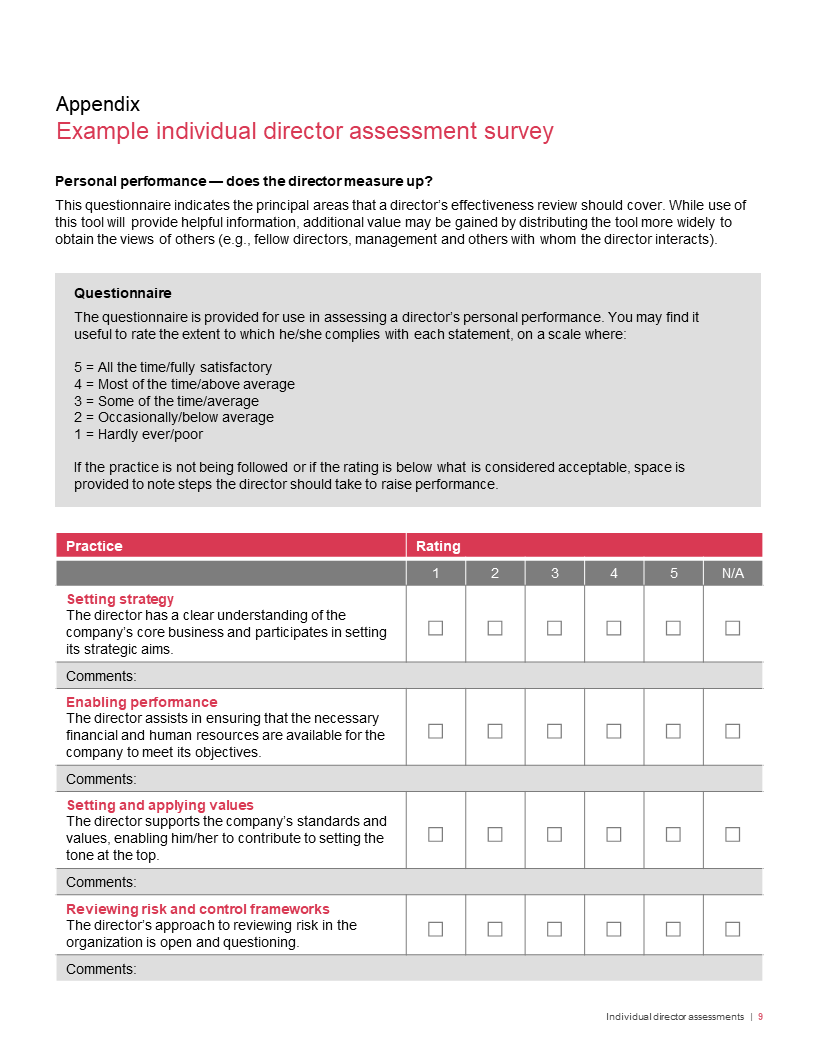

Conducting effective board assessments
Here are some different approaches boards can take to make their performance assessments a valuable exercise that drives change and enhances board performance.
Assessing individual director performance is critical for today’s boards. While performance assessments may be standard for executives and the board as a whole, less than half of S&P 500 boards disclose that they perform individual director assessments.1 Such assessments promote continuous improvement and can drive necessary changes in board composition and ensure alignment with the company’s strategy. Individual director assessments also demonstrate to investors the board’s commitment to holding directors accountable for their performance.
For boards without individual director assessments, start with self-assessments, and then consider peer assessments. Properly conducted director assessments can enhance overall board performance, making the effort worthwhile.
1Spencer Stuart, 2022 U.S. Spencer Stuart Board Index, November 2022.

The hierarchical nature of most organizations means that the CEO on down has a supervisor or governing body to appraise their performance. Boards are different. While there’s a chair and/or a lead independent director as well as committee chairs, board members are peers.
Increasingly then, boards that evaluate individual performance are leveraging peer assessments, with directors anonymously assessing their fellow board members. As part of this process, the CEO and other senior leaders may also provide individual director feedback. Individual director assessments can provide insights into not only the value of individual contributions, but also how an individual’s presence affects the board’s overall culture and performance.
...read more in the report.
In the appendix of our guide, we've included an example individual director assessment survey. This example questionnaire indicates the principal areas that a director’s effectiveness review should cover. While use of this tool will provide helpful information, additional value may be gained by distributing the tool more widely to obtain the views of others (e.g., fellow directors, management and others with whom the director interacts).
…read more in the report.

Directors, individually and collectively, should view individual assessments as an opportunity to evaluate board culture and dynamics and gauge whether the structure encourages open discussion. These assessments get directors thinking about their performance where they can add value, how they can leverage their unique experiences and when it may be time to step away from the role. Assessments are important feedback mechanisms to aid directors’ growth and maximize their contributions to the board and the company.


Here are some different approaches boards can take to make their performance assessments a valuable exercise that drives change and enhances board performance.


How effective is your board in its oversight role around key business risks?


Over 500 corporate directors shared their views on the most pressing issues facing boards. Learn their views on how they are leading their organizations through uncharted territory in our 2024 survey.


